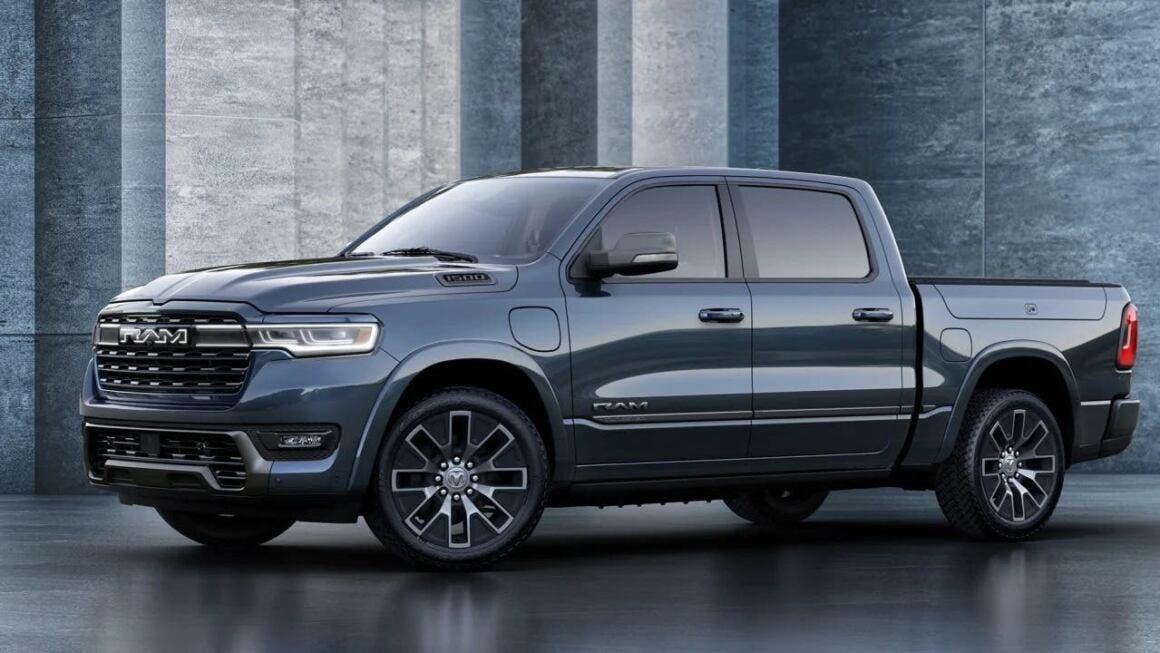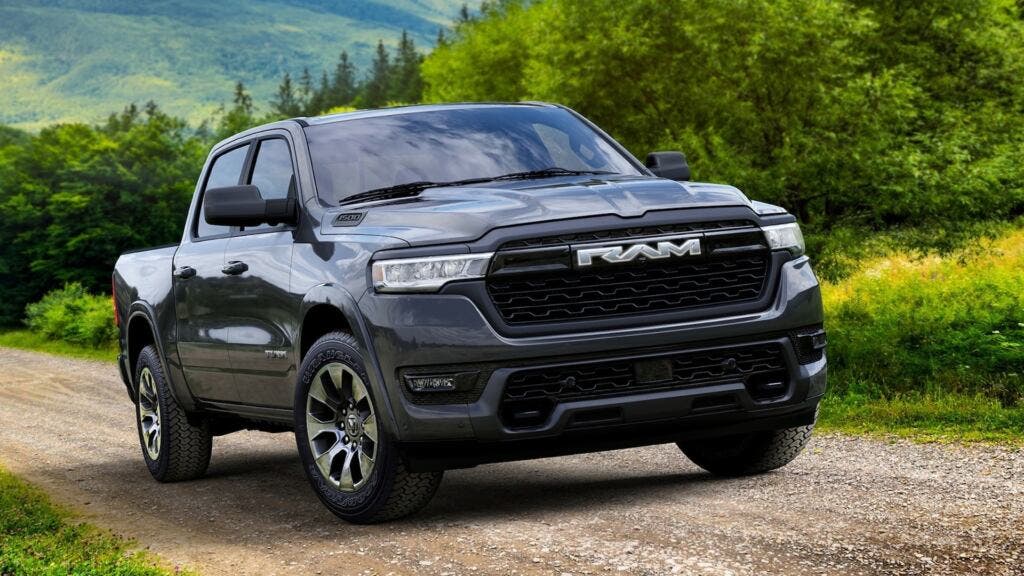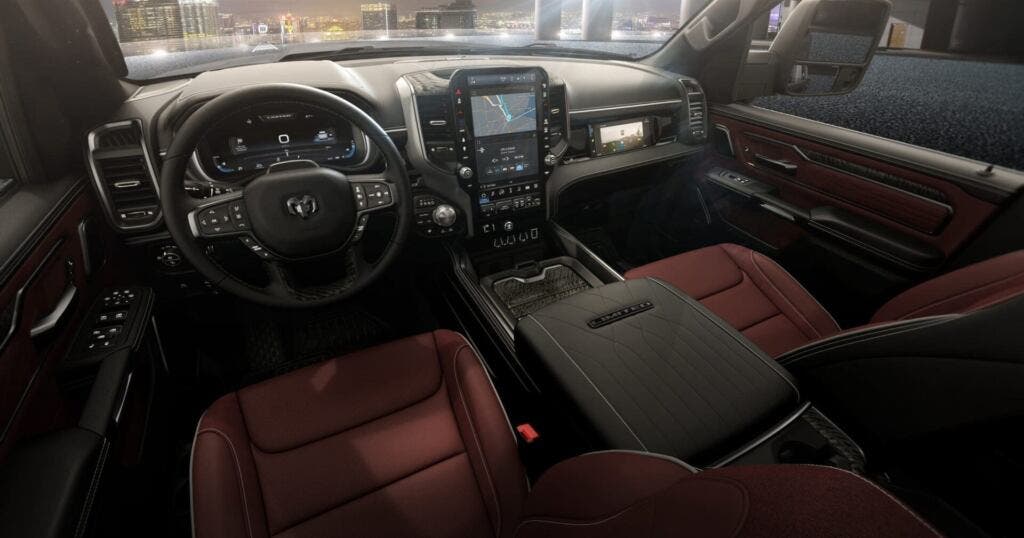Ram has unveiled its electric pickup, the Ram 1500 Ramcharger. The model joins a range of refreshed 1500 pickups with internal combustion engines that will be launched in the first quarter of 2024 for the 2025 model year, featuring the inline Hurricane V-6 engine, replacing the V-8 Hemi. Prices will be announced later.
Ram 1500 Ramcharger offers the best combination in the industry of range, towing capacity, and payload
The Ram 1500 Ramcharger is the vehicle that Stellantis had previously announced as the “Range Electric Paradigm Breaker” and REV XR. It’s an electric pickup with an onboard “generator” producing 130 kilowatts of power from a 3.6-liter Pentastar V-6 gasoline engine, which can recharge the vehicle’s battery. The Ramcharger, based on the same STLA Frame steel structure as the fully electric Ram 1500 REV pickup, operates solely on electricity but can activate the generator when the battery level drops below a certain point.
According to Ram, the vehicle offers up to 1,110 kilometers of range, with 230 kilometers coming from the battery and an additional 880 kilometers generated by the generator, powered by a 27-gallon fuel tank. In comparison, the extended-range battery of the REV offers 800 kilometers of range.
Those who have paid $100 to join the Ram Revolution Insider+ program on RamREV.com will be able to pre-order the REV or Ramcharger with early access. There will be a new pre-order period until the end of the year or until slots are filled. The company has not disclosed how many pre-orders it has received for its electric pickup. The launch of the REV and Ramcharger is scheduled for the last quarter of 2024. Stellantis has decided to produce the electric pickups at the Ram 1500 facility in its Sterling Heights assembly plant, by the provisional agreement with the United Auto Workers.
The debut of the Ramcharger comes as Stellantis’ competitors are delaying their electric vehicle plans due to slowing sales, as consumer concerns about insufficient range, limited public charging stations, and slow charging speeds persist.
The Ramcharger is not a plug-in hybrid, Kuniskis said. The generator has no direct mechanical connection to the wheels, so it cannot power the vehicle as past vehicles with a similar concept, like the Chevrolet Volt, could. It’s only the battery that powers the front 250-kilowatt and rear 238-kilowatt electric drive units. Three modes control the generator’s operation. In Electric Plus, the generator starts automatically when the battery level reaches about 16%, which has been tested as the most efficient level, according to Joe Tolkacz, chief engineer of Ramcharger propulsion. It might activate closer to 20-30% if the vehicle is towing or carrying a load.
An E-Save mode allows the driver to conserve battery charge by using the generator to keep it powered. An Eco mode focuses on maximizing range, including its effect on climate controls in addition to vehicle performance. In each mode, the vehicle always operates as an electric vehicle with instant torque and other performance advantages, unlike a plug-in hybrid that can only run on the engine. Furthermore, the Ramcharger operates “without any of the drawbacks” of a traditional electric vehicle, Kuniskis said.
Having the battery solely power the vehicle reduces complexity and the potential for things to go wrong, said Doug Killian, head of the vehicle synthesis group for STLA Frame. It also preserves efficiency; plug-in hybrids lose energy when transitioning from the battery to the engine. The Ramcharger also counts as a fully electric vehicle, Kuniskis said, to achieve Stellantis’ goal of selling over 50% of battery electric vehicle sales by 2030, even though it is not zero emissions.



